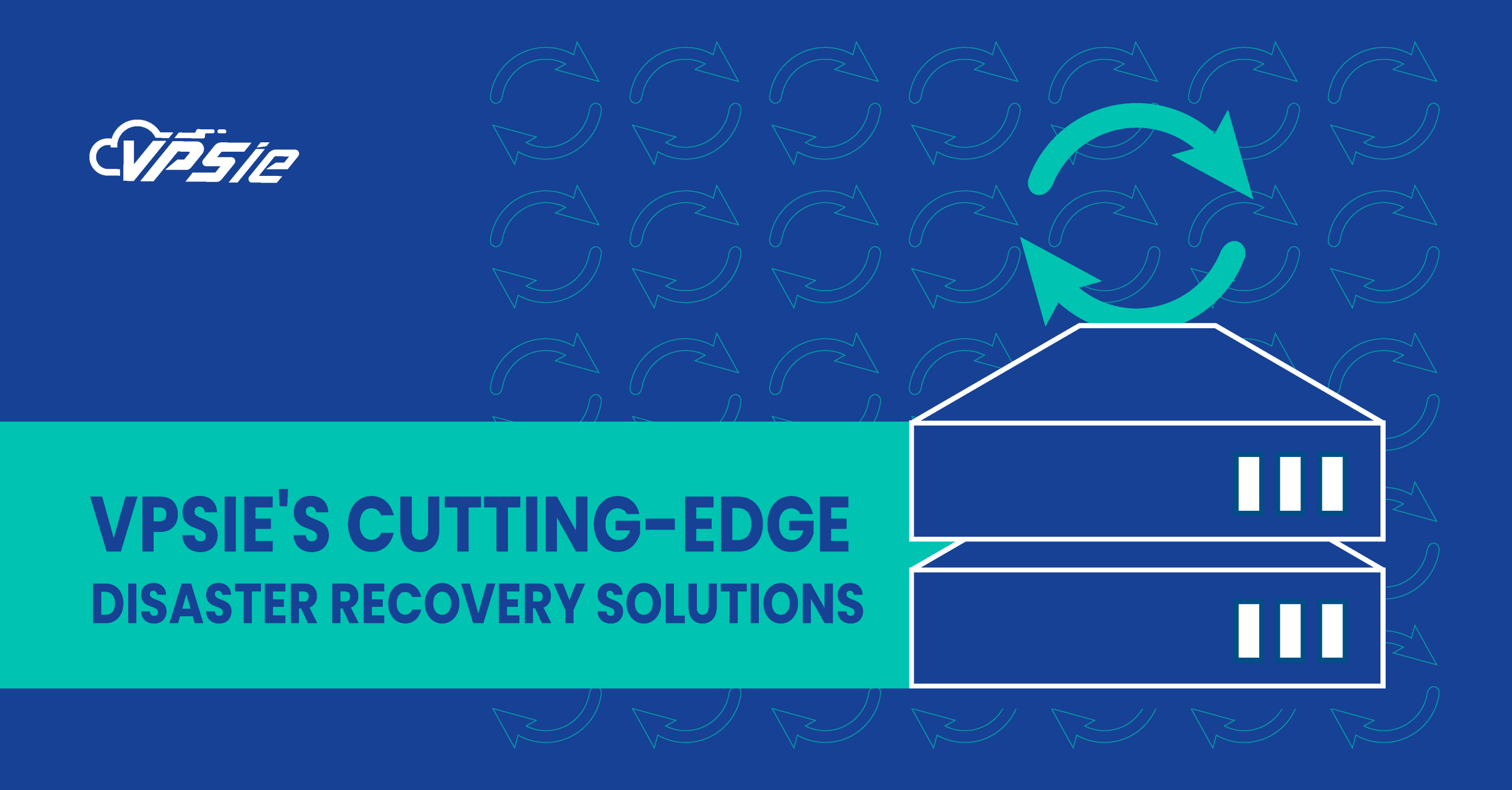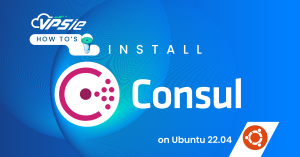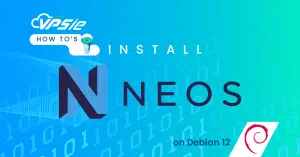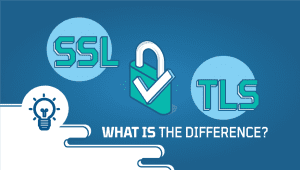VPSie's Cutting-Edge Disaster Recovery Solutions
Organisations and businesses relies primarily on their digital infrastructure to operate effectively and keep competitive in modern technologically driven environment. The growing dependence on technology, however, opens them to a wide range of dangers, include system breakdowns, cyberattacks, disasters caused by nature, and mistakes made by people, that can result in loss of information, downtime, and severe financial and reputational damage. This is the point where disaster recovery strategies comes in. Disaster recovery options are vital to companies of every kind to safeguard important data and maintain business continuity in the face of unanticipated events. These remedies include a variety of methods, technologies, and procedures designed to reduce downtime, recover lost data, and quickly reestablish normal operations. Businesses can safeguard their valuable assets, keep consumer trust, and restrict the possible impact of interruptions on their bottom line through the implementation of comprehensive disaster recovery strategies.
In the following sections, we will take a look at the cutting-edge disaster recovery solutions offered by VPSie. We’ll go through our primary capabilities, deployment process, customer service, and the many advantages that businesses can get through using or innovative technology.
Understanding Disaster Recovery
The worldwide computer crisis has accelerated companies to make use of cloud platforms, with a view of enhancing computational flexibility and efficiency. Actually, businesses are currently utilising cloud services and expect to grow their cloud expenditure. This basic change has altered the concept of disaster recovery (DR) as well as how it appears around the world. Although using cloud computing has numerous benefits when handling digital assets, it is not immune to disasters. Understanding the importance of data to an organisation, safeguarding it against both produced and natural disasters becomes essential.
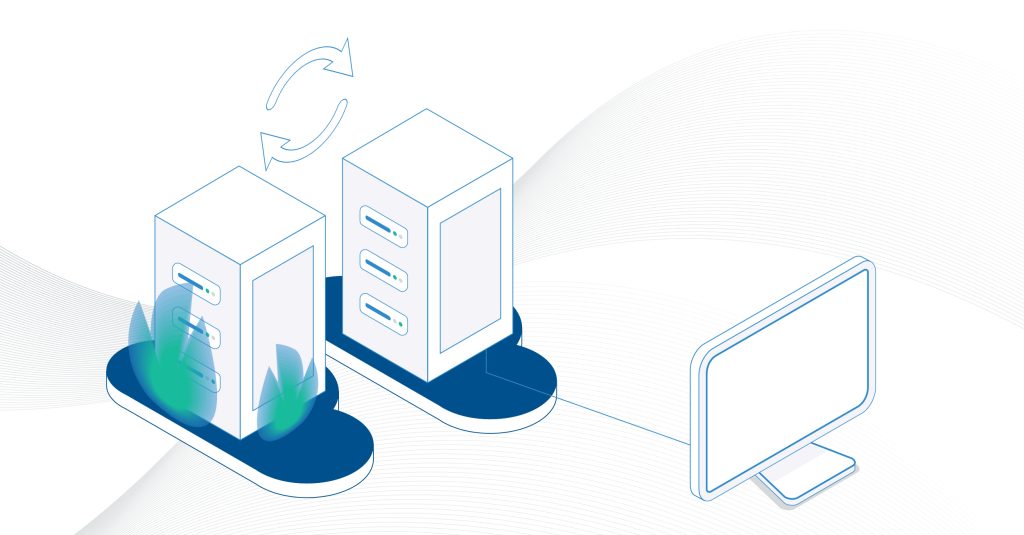
Organisations have to handle their mitigation and recovery procedures effectively since the exact moment and effects of catastrophes are unpredictable and out of their control. This is the point where cloud disaster recovery (cloud DR) comes into the equation. The possible damage caused by a single catastrophic event, like floods, can be significantly decreased through setting up solid backups and distributing data over numerous servers across various locations. Cloud disaster recovery (Cloud DR) allows businesses to backup and restore essential data and remote systems in the cloud. By using specialised service providers and publicly accessible clouds, it incorporates diverse strategies and offerings for protecting data, applications, and computing resources.
This method, that’s frequently provided as infrastructure-as-a-service (IaaS), protects valuable company assets by storing them remotely on offsite servers. Also, it enables organisations to recover quickly and continue operations in the event of a calamity. Within the global field of cloud computing, technology for the cloud plays an essential part for offering effective disaster recovery. It provides exceptional flexibility, shorter recuperation times, and excellent resource availability. Companies may customise their cloud DR solutions to meet their own unique company requirements, allowing for a personalised and optimised disaster recovery strategy.
Comparing Cloud Disaster Recovery and Traditional Disaster Recovery Approaches
The two approaches to ensuring company operations in the case of a disaster or disruption are cloud disaster recovery (CDR) and traditional disaster recovery (TDR). Although both of them have a similar purpose, they exhibit certain important differences.
Infrastructure: Traditionally, organisations develop and oversee their own backup data centre or recovery locations, which require substantial expenditures in hardware, software, and networking infrastructure. Cloud Disaster Recovery, on the other hand, makes use of computing infrastructure offered by third-party vendors like VPSie, eliminating the need for organisations to spend money on maintaining their own equipment.
Scalability and Flexibility: When contrasted with conventional disaster recovery, cloud disaster recovery provides higher flexibility and scalability. Organisations may merely scale either increasing or decreasing their recuperation resources with solutions that are cloud-based based on their needs. They may easily add capacity throughout periods of high activity and scale back during regular operations. Traditional disaster recovery frequently requires fixed infrastructure that is not readily extensible.
Cost : Conventional recovery from disasters can be expensive due to the initial financial investment essential to create and operate backup data centres. The hardware, software licences, facility fees, and ongoing upkeep have to all be invested in by organisations. Cloud Disaster Recovery, on the other hand, frequently relies on a spend-as-you-go strategy, allowing organisations to shell out for services and resources only if they are needed. This may help in reducing cost.
Management and Maintenance: Conventional Disaster Recovery involves organisations controlling and upholding their alternate data centres, which can be complicated and resource-intensive. Hardware supply and demand, updates to software, security, and testing are a few examples of these kinds of duties. The hosting company (VPSie) handles nearly all of infrastructure administration and upkeep tasks with Cloud Disaster Recovery, freeing up the employees of the company to focus on essential company operations.
Geographic Redundancy: When contrasted with conventional disaster recovery, cloud disaster recovery often provides better geographical redundancy. Cloud service providers generally have many storage centres spread throughout various regions, offering better protection against regional disasters. In accordance with the assets of the company and construction, traditional disaster recovery may have geographic redundancy boundaries.
Recovery Time Objective (RTO): RTO refers to how long it is projected that it will require to recover applications and systems following a disaster. Due to the inherent advantages of cloud infrastructure, such as replication of data, automatic backups, and faster resource provisioning, cloud disaster recovery can enable faster RTO. According to the structure and procedures in place, traditional disaster recovery may have longer RTOs and higher RPOs.
It’s important to note that the decision between Cloud Disaster Recovery and Traditional Disaster Recovery is influenced by a variety of factors, including the organization’s budget, IT infrastructure, compliance requirements, and risk tolerance.
VPSie Strategies for Effective Disaster Recovery Implementation
VPSie can be a significant component of your entire disaster recovery approach. Here are some tactics and points to consider while using VPSie into your disaster recovery plan:
Geographic Diversity: Distribute your VPSie instances across several geographic locations or VPSie data centres. This guarantees that if one location is impacted by a natural disaster, your services can continue to operate from another. Geographic diversity reduces the probability of a single point of failure.
By spreading VPSie instances all through multiple locations, you minimise the possibility of a single disaster, such as a natural disaster, power outage, or failure of the network, impacting all of your servers simultaneously. If one location becomes unavailable or has disturbances, your services can continue to operate from other locations.
Here are some of the most important advantages of geographic diversity for disaster recovery in a VPSie:
1. High Availability: Geographic variety ensures that your amenities remain functional regardless of whether one of your locations suffers a calamity or outage. Users can be immediately directed to functioning VPSie instances in other locations, reducing downtime and ensuring service continuity.
2. Data Redundancy: You may duplicate and distribute your data across multiple locations by installing VPSie instances in various parts of the world. This system of redundancy ensures that your vital data remains safe and readily available even if a single location suffers from data loss or corruption.
3. Regional Failover: If a disaster occurs in one region, you can use failover methods that automatically redirect traffic to VPSie instances in a different region. This helps to service availability and reduces the impact on those who use it.
4. Compliance and Regulations: Geographic diversity can assist you in meeting certain legal requirements, such as data backups and disaster recovery in several locations. It indicates your dedication to data security and reduces the chance of violation.
5. Improved Performance: By placing VPSie instances in different areas that are near your intended audience, you may increase performance and reduce latency. Users can connect to the nearest available server, resulting in quicker response times and a more comfortable user experience.
Automated backups: It’s an essential component of disaster recovery strategies as they help ensure data integrity and enable quick restoration in the event of a disaster.
Here’s how VPSie’s automated backups for disaster recovery typically work:
1. Scheduled Backup: You can configure periodic backups of your VPSie instances in VPSie. You may customise the frequency and timing of the backups to your own needs. Backups might be scheduled on a daily, weekly, or monthly basis.
2. Incremental Backups: VPSie frequently makes use of incremental data backup technology. This implies that after the first full backup, subsequent backups will just contain the modifications made after the last backup. When compared to complete backups, incremental backups are more rapid and consume less memory.
3. Data Retention: VPSie usually provides decisions for selecting backup retention periods. You can define the duration that backups should be kept before being permanently removed. Keeping backups for an appropriate duration of time helps you to restore your VPSie instance to a known state of health from various sources.
4. Offsite Storage: Backups frequently reside in an offsite place distinct from the original VPSie instances. Backups stored the offshore level aren’t impacted by the same disaster that may damage your primary network. Offsite storage of data improves data resilience and recovery options.
5. Restoration Process: In the event of an accident or data loss, VPSie allows you to restore your VPSie instance using automated backups. Accessing the backup repository, selecting the desired backup, and starting the restore procedure constitute typical steps in the recovery process.
6. Testing and Verification: It is critical to perform tests and validate the accuracy of your backups on frequently. VPSie provide choices or directions to help you verify backup data and make sure it can be correctly restored. Regular evaluation ensures that your backups are reliable and can be depended on in the event of a disaster.
Disaster Recovery Monitoring:
- Implement advanced monitoring tools to monitor the health and performance of your VPSie instances and associated services on a regular basis.
- Important metrics such as CPU consumption, memory utilisation, network traffic, disc space, and specific to the application performance indicators should be monitored.
- Set up alerts and notifications to detect any anomalies or errors as soon as possible.
- Monitoring replication of data processes and backup processes to ensure that backups are completed successfully within specified time frames.
- Review monitoring data on a regular basis to spot possible problems before they become disasters.
- Integrate monitoring with your event management tool to improve response and resolution speeds during disaster recovery scenarios.
VPSie does offer monitoring and alerting capabilities, although customers have the flexibility to use their own preferred monitoring tools as well. While VPSie provides monitoring features, customers can also leverage widely-used industry solutions such as Nagios, Zabbix, Datadog, or Prometheus to monitor their VPSie infrastructure. These tools can help track important metrics like CPU usage, memory utilization, network traffic, disk space, and application-specific performance indicators. Additionally, customers can utilize scripting or automation tools to conduct regular checks and ensure the reliability of their disaster recovery setup. By combining VPSie’s monitoring features with external monitoring tools, customers have the freedom to choose the best solution that meets their specific requirements.
Keep in mind that your testing and monitoring strategy should be customised for your specific VPSie environment and disaster recovery requirements. As your infrastructure develops, evaluate and update your testing and monitoring methods on a regular basis to ensure the continued success of your disaster recovery strategy.

